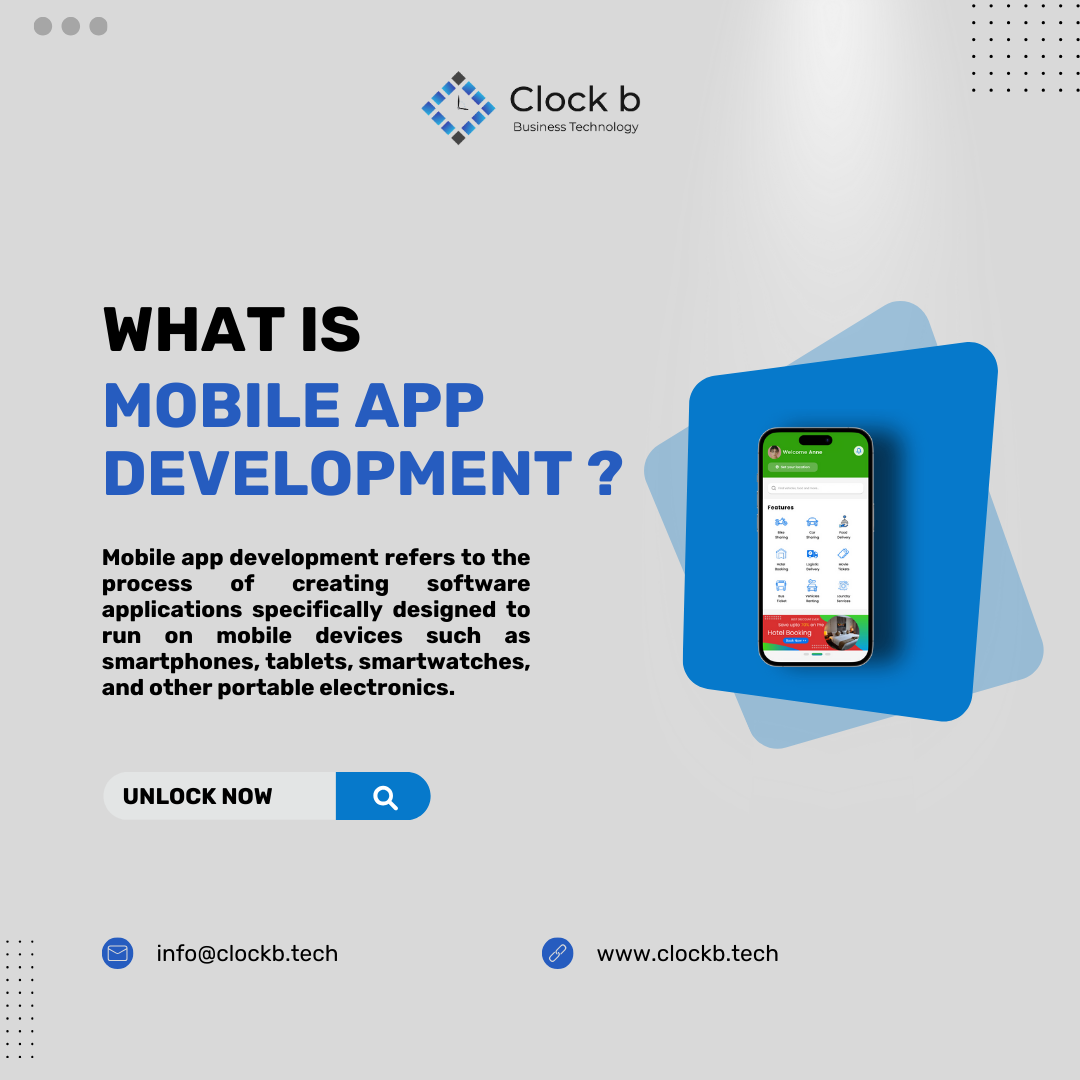Introduction
In today’s digital world, Mobile Apps are everywhere, connecting us to information, services, and entertainment effortlessly. But have you ever wondered how these apps come to life? Mobile App Development is the process behind creating these useful applications for your smartphones and tablets. In this article, we’ll explore what Mobile App Development is all about, from its definition to the essential steps involved.
What is Mobile App Development?
Mobile App Development refers to the process of creating software applications specifically designed to run on mobile devices such as smartphones, tablets, smartwatches, and other portable electronics. These apps are designed for platforms such as iOS (Apple devices) and Android (Google devices), serving a wide range of users. The main goal of Mobile App Development is to create applications that offer users efficient, enjoyable experiences by being well-designed, functional, and purposeful.
1. Features of Mobile App Development
a. Cross-Platform Compatibility
Ensure the app works and functions smoothly across different operating systems like iOS and Android, often achieved using frameworks like React Native or Flutter.
b. User Interface (UI) and User Experience (UX) Design
Create user-friendly and visually attractive designs and interactions that improve user satisfaction and engagement.
c. Backend Development and Data Management
Build strong backend systems to handle data storage, user authentication, and secure communication with servers and databases.
d. Integration with Device Features
Utilize device capabilities such as cameras, GPS, and sensors to create innovative features and enhance the user experience.
e. Security and Performance Optimization
Implement security measures to protect user data and transactions, while also optimizing app performance and monitoring analytics for continuous improvement.
2. Process of Mobile App Development
Strategy
First, it’s essential to understand why we’re creating the app and what we want it to accomplish. This involves researching the market, identifying our target users, and checking out similar apps. The aim is to define a clear purpose and what makes our app unique.
Analysis and Planning
We make a detailed plan for the app, gathering requirements, deciding on features, and how it will work. We set a budget, timelines, and allocate resources to ensure everyone knows what to do and how the app will come together.
Design
Designers take the requirements and turn them into a visual experience. They create layouts and interfaces to make the app easy to use and visually attractive, matching your brand and user preferences.
Development
Developers write the code that brings the app to life based on the design. They build its features, connect it to databases, and make sure everything works smoothly. This stage needs close collaboration between designers and developers to match the initial vision.
Testing
The app goes through careful testing to find and fix any bugs or issues. We check every part of the app to ensure it works well, using both manual and automated testing methods.
Deployment
Once the app is thoroughly tested, it’s ready for release. We follow guidelines from app stores like Apple’s App Store and Google Play to make it available for users to download.
Monitoring and Optimization
After launch, we monitor how the app performs. We track user engagement, gather feedback, and analyze usage data. Based on this information, we make updates and improvements to keep the app relevant and effective over time.
Conclusion
In conclusion, Mobile App Development is always changing and shaping the digital world. It’s a team effort involving Designers, Developers, and Testers, from planning to launching the app. As technology grows, apps will get even better, offering users smoother experiences. Whether you’re a developer, business owner, or user, knowing the basics of app development gives you a glimpse into this exciting world of mobile apps.


